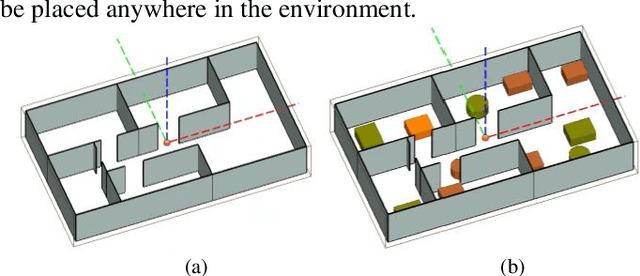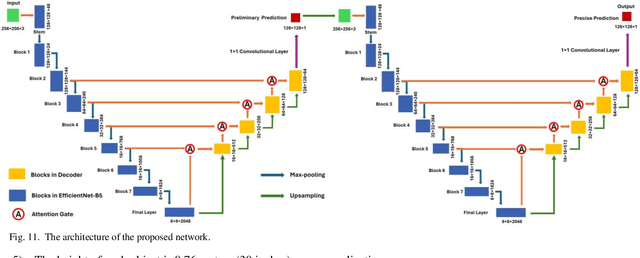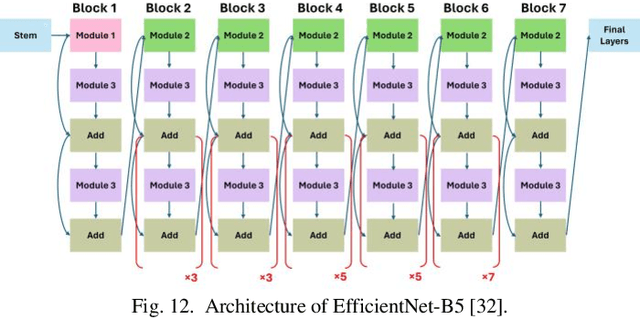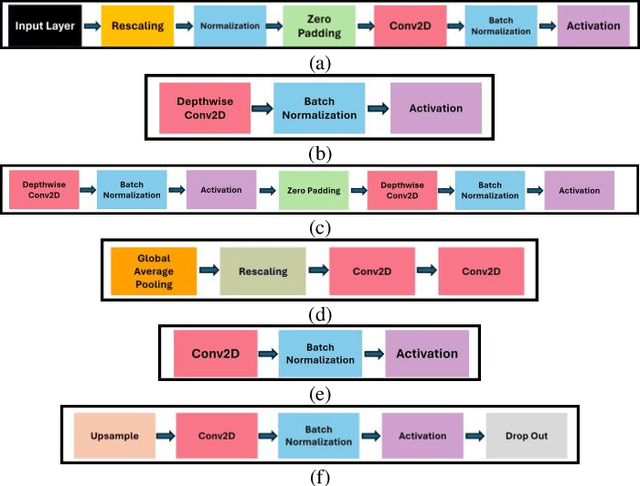Prasenjit Mitra
TaxoAdapt: Aligning LLM-Based Multidimensional Taxonomy Construction to Evolving Research Corpora
Jun 12, 2025Abstract:The rapid evolution of scientific fields introduces challenges in organizing and retrieving scientific literature. While expert-curated taxonomies have traditionally addressed this need, the process is time-consuming and expensive. Furthermore, recent automatic taxonomy construction methods either (1) over-rely on a specific corpus, sacrificing generalizability, or (2) depend heavily on the general knowledge of large language models (LLMs) contained within their pre-training datasets, often overlooking the dynamic nature of evolving scientific domains. Additionally, these approaches fail to account for the multi-faceted nature of scientific literature, where a single research paper may contribute to multiple dimensions (e.g., methodology, new tasks, evaluation metrics, benchmarks). To address these gaps, we propose TaxoAdapt, a framework that dynamically adapts an LLM-generated taxonomy to a given corpus across multiple dimensions. TaxoAdapt performs iterative hierarchical classification, expanding both the taxonomy width and depth based on corpus' topical distribution. We demonstrate its state-of-the-art performance across a diverse set of computer science conferences over the years to showcase its ability to structure and capture the evolution of scientific fields. As a multidimensional method, TaxoAdapt generates taxonomies that are 26.51% more granularity-preserving and 50.41% more coherent than the most competitive baselines judged by LLMs.
How to Backdoor the Knowledge Distillation
Apr 30, 2025Abstract:Knowledge distillation has become a cornerstone in modern machine learning systems, celebrated for its ability to transfer knowledge from a large, complex teacher model to a more efficient student model. Traditionally, this process is regarded as secure, assuming the teacher model is clean. This belief stems from conventional backdoor attacks relying on poisoned training data with backdoor triggers and attacker-chosen labels, which are not involved in the distillation process. Instead, knowledge distillation uses the outputs of a clean teacher model to guide the student model, inherently preventing recognition or response to backdoor triggers as intended by an attacker. In this paper, we challenge this assumption by introducing a novel attack methodology that strategically poisons the distillation dataset with adversarial examples embedded with backdoor triggers. This technique allows for the stealthy compromise of the student model while maintaining the integrity of the teacher model. Our innovative approach represents the first successful exploitation of vulnerabilities within the knowledge distillation process using clean teacher models. Through extensive experiments conducted across various datasets and attack settings, we demonstrate the robustness, stealthiness, and effectiveness of our method. Our findings reveal previously unrecognized vulnerabilities and pave the way for future research aimed at securing knowledge distillation processes against backdoor attacks.
When Reasoning Meets Compression: Benchmarking Compressed Large Reasoning Models on Complex Reasoning Tasks
Apr 02, 2025Abstract:Recent open-source large reasoning models (LRMs) exhibit strong performance on complex reasoning tasks, but their large parameter count makes them prohibitively expensive for individuals. The compression of large language models (LLMs) offers an effective solution to reduce cost of computational resources. However, systematic studies on the performance of compressed LLMs in complex reasoning tasks, especially for LRMs, are lacking. Most works on quantization and pruning focus on preserving language modeling performance, while existing distillation works do not comprehensively benchmark student models based on reasoning difficulty or compression impact on knowledge and reasoning. In this paper, we benchmark compressed DeepSeek-R1 models on four different reasoning datasets (AIME 2024, FOLIO, Temporal Sequences of BIG-Bench Hard, and MuSiQue), ranging from mathematical to multihop reasoning, using quantization, distillation, and pruning methods. We benchmark 2.51-, 1.73-, and 1.58-bit R1 models that adopt dynamic quantization. We also benchmark distilled R1 models that are based on LLaMA or Qwen and run SparseGPT on them to obtain various sparsity levels. Studying the performance and behavior of compressed LRMs, we report their performance scores and test-time compute (number of tokens spent on each question). Notably, using MuSiQue, we find that parameter count has a much greater impact on LRMs' knowledge memorization than on their reasoning capability, which can inform the choice of compression techniques. Through our empirical analysis of test-time compute, we find that shorter model outputs generally achieve better performance than longer ones across several benchmarks for both R1 and its compressed variants, highlighting the need for more concise reasoning chains.
Iterative Hypothesis Generation for Scientific Discovery with Monte Carlo Nash Equilibrium Self-Refining Trees
Mar 25, 2025



Abstract:Scientific hypothesis generation is a fundamentally challenging task in research, requiring the synthesis of novel and empirically grounded insights. Traditional approaches rely on human intuition and domain expertise, while purely large language model (LLM) based methods often struggle to produce hypotheses that are both innovative and reliable. To address these limitations, we propose the Monte Carlo Nash Equilibrium Self-Refine Tree (MC-NEST), a novel framework that integrates Monte Carlo Tree Search with Nash Equilibrium strategies to iteratively refine and validate hypotheses. MC-NEST dynamically balances exploration and exploitation through adaptive sampling strategies, which prioritize high-potential hypotheses while maintaining diversity in the search space. We demonstrate the effectiveness of MC-NEST through comprehensive experiments across multiple domains, including biomedicine, social science, and computer science. MC-NEST achieves average scores of 2.65, 2.74, and 2.80 (on a 1-3 scale) for novelty, clarity, significance, and verifiability metrics on the social science, computer science, and biomedicine datasets, respectively, outperforming state-of-the-art prompt-based methods, which achieve 2.36, 2.51, and 2.52 on the same datasets. These results underscore MC-NEST's ability to generate high-quality, empirically grounded hypotheses across diverse domains. Furthermore, MC-NEST facilitates structured human-AI collaboration, ensuring that LLMs augment human creativity rather than replace it. By addressing key challenges such as iterative refinement and the exploration-exploitation balance, MC-NEST sets a new benchmark in automated hypothesis generation. Additionally, MC-NEST's ethical design enables responsible AI use, emphasizing transparency and human supervision in hypothesis generation.
SCI-IDEA: Context-Aware Scientific Ideation Using Token and Sentence Embeddings
Mar 25, 2025



Abstract:Every scientific discovery starts with an idea inspired by prior work, interdisciplinary concepts, and emerging challenges. Recent advancements in large language models (LLMs) trained on scientific corpora have driven interest in AI-supported idea generation. However, generating context-aware, high-quality, and innovative ideas remains challenging. We introduce SCI-IDEA, a framework that uses LLM prompting strategies and Aha Moment detection for iterative idea refinement. SCI-IDEA extracts essential facets from research publications, assessing generated ideas on novelty, excitement, feasibility, and effectiveness. Comprehensive experiments validate SCI-IDEA's effectiveness, achieving average scores of 6.84, 6.86, 6.89, and 6.84 (on a 1-10 scale) across novelty, excitement, feasibility, and effectiveness, respectively. Evaluations employed GPT-4o, GPT-4.5, DeepSeek-32B (each under 2-shot prompting), and DeepSeek-70B (3-shot prompting), with token-level embeddings used for Aha Moment detection. Similarly, it achieves scores of 6.87, 6.86, 6.83, and 6.87 using GPT-4o under 5-shot prompting, GPT-4.5 under 3-shot prompting, DeepSeek-32B under zero-shot chain-of-thought prompting, and DeepSeek-70B under 5-shot prompting with sentence-level embeddings. We also address ethical considerations such as intellectual credit, potential misuse, and balancing human creativity with AI-driven ideation. Our results highlight SCI-IDEA's potential to facilitate the structured and flexible exploration of context-aware scientific ideas, supporting innovation while maintaining ethical standards.
Graph-based Molecular In-context Learning Grounded on Morgan Fingerprints
Feb 08, 2025



Abstract:In-context learning (ICL) effectively conditions large language models (LLMs) for molecular tasks, such as property prediction and molecule captioning, by embedding carefully selected demonstration examples into the input prompt. This approach avoids the computational overhead of extensive pertaining and fine-tuning. However, current prompt retrieval methods for molecular tasks have relied on molecule feature similarity, such as Morgan fingerprints, which do not adequately capture the global molecular and atom-binding relationships. As a result, these methods fail to represent the full complexity of molecular structures during inference. Moreover, small-to-medium-sized LLMs, which offer simpler deployment requirements in specialized systems, have remained largely unexplored in the molecular ICL literature. To address these gaps, we propose a self-supervised learning technique, GAMIC (Graph-Aligned Molecular In-Context learning, which aligns global molecular structures, represented by graph neural networks (GNNs), with textual captions (descriptions) while leveraging local feature similarity through Morgan fingerprints. In addition, we introduce a Maximum Marginal Relevance (MMR) based diversity heuristic during retrieval to optimize input prompt demonstration samples. Our experimental findings using diverse benchmark datasets show GAMIC outperforms simple Morgan-based ICL retrieval methods across all tasks by up to 45%.
Semantic Captioning: Benchmark Dataset and Graph-Aware Few-Shot In-Context Learning for SQL2Text
Jan 06, 2025Abstract:Large Language Models (LLMs) have demonstrated remarkable performance in various NLP tasks, including semantic parsing, which trans lates natural language into formal code representations. However, the reverse process, translating code into natural language, termed semantic captioning, has received less attention. This task is becoming increasingly important as LLMs are integrated into platforms for code generation, security analysis, and educational purposes. In this paper, we focus on the captioning of SQL query (SQL2Text) to address the critical need for understanding and explaining SQL queries in an era where LLM-generated code poses potential security risks. We repurpose Text2SQL datasets for SQL2Text by introducing an iterative ICL prompt using GPT-4o to generate multiple additional utterances, which enhances the robustness of the datasets for the reverse task. We conduct our experiments using in-context learning (ICL) based on different sample selection methods, emphasizing smaller, more computationally efficient LLMs. Our findings demonstrate that leveraging the inherent graph properties of SQL for ICL sample selection significantly outperforms random selection by up to 39% on BLEU score and provides better results than alternative methods. Dataset and codes are published: \url{https://github.com/aliwister/ast-icl}.
SiReRAG: Indexing Similar and Related Information for Multihop Reasoning
Dec 09, 2024



Abstract:Indexing is an important step towards strong performance in retrieval-augmented generation (RAG) systems. However, existing methods organize data based on either semantic similarity (similarity) or related information (relatedness), but do not cover both perspectives comprehensively. Our analysis reveals that modeling only one perspective results in insufficient knowledge synthesis, leading to suboptimal performance on complex tasks requiring multihop reasoning. In this paper, we propose SiReRAG, a novel RAG indexing approach that explicitly considers both similar and related information. On the similarity side, we follow existing work and explore some variances to construct a similarity tree based on recursive summarization. On the relatedness side, SiReRAG extracts propositions and entities from texts, groups propositions via shared entities, and generates recursive summaries to construct a relatedness tree. We index and flatten both similarity and relatedness trees into a unified retrieval pool. Our experiments demonstrate that SiReRAG consistently outperforms state-of-the-art indexing methods on three multihop datasets (MuSiQue, 2WikiMultiHopQA, and HotpotQA), with an average 1.9% improvement in F1 scores. As a reasonably efficient solution, SiReRAG enhances existing reranking methods significantly, with up to 7.8% improvement in average F1 scores.
Transfer Learning and Double U-Net Empowered Wave Propagation Model in Complex Indoor Environment
Sep 20, 2024



Abstract:A Machine Learning (ML) network based on transfer learning and transformer networks is applied to wave propagation models for complex indoor settings. This network is designed to predict signal propagation in environments with a variety of objects, effectively simulating the diverse range of furniture typically found in indoor spaces. We propose Attention U-Net with Efficient Networks as the backbone, to process images encoded with the essential information of the indoor environment. The indoor environment is defined by its fundamental structure, such as the arrangement of walls, windows, and doorways, alongside varying configurations of furniture placement. An innovative algorithm is introduced to generate a 3D environment from a 2D floorplan, which is crucial for efficient collection of data for training. The model is evaluated by comparing the predicted signal coverage map with ray tracing (RT) simulations. The prediction results show a root mean square error of less than 6 dB across all tested scenarios, with significant improvements observed when using a Double U-Net structure compared to a single U-Net model.
PromptFix: Few-shot Backdoor Removal via Adversarial Prompt Tuning
Jun 06, 2024Abstract:Pre-trained language models (PLMs) have attracted enormous attention over the past few years with their unparalleled performances. Meanwhile, the soaring cost to train PLMs as well as their amazing generalizability have jointly contributed to few-shot fine-tuning and prompting as the most popular training paradigms for natural language processing (NLP) models. Nevertheless, existing studies have shown that these NLP models can be backdoored such that model behavior is manipulated when trigger tokens are presented. In this paper, we propose PromptFix, a novel backdoor mitigation strategy for NLP models via adversarial prompt-tuning in few-shot settings. Unlike existing NLP backdoor removal methods, which rely on accurate trigger inversion and subsequent model fine-tuning, PromptFix keeps the model parameters intact and only utilizes two extra sets of soft tokens which approximate the trigger and counteract it respectively. The use of soft tokens and adversarial optimization eliminates the need to enumerate possible backdoor configurations and enables an adaptive balance between trigger finding and preservation of performance. Experiments with various backdoor attacks validate the effectiveness of the proposed method and the performances when domain shift is present further shows PromptFix's applicability to models pretrained on unknown data source which is the common case in prompt tuning scenarios.
 Add to Chrome
Add to Chrome Add to Firefox
Add to Firefox Add to Edge
Add to Edge